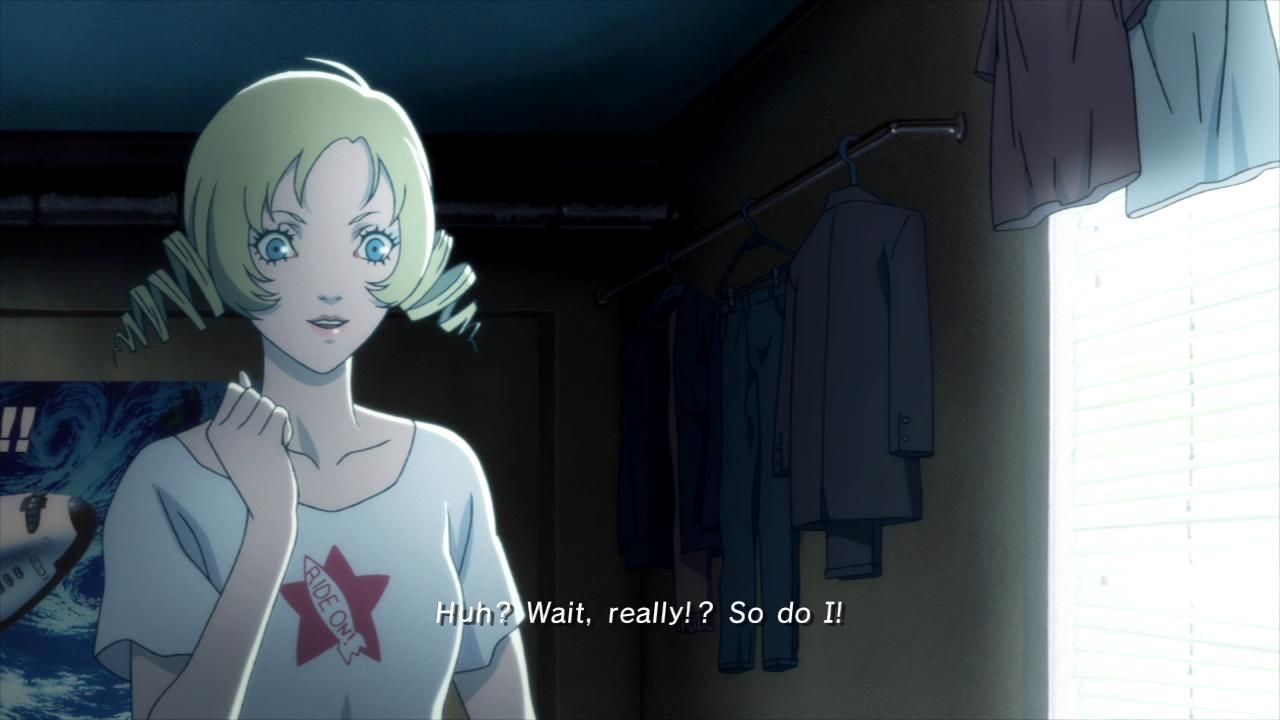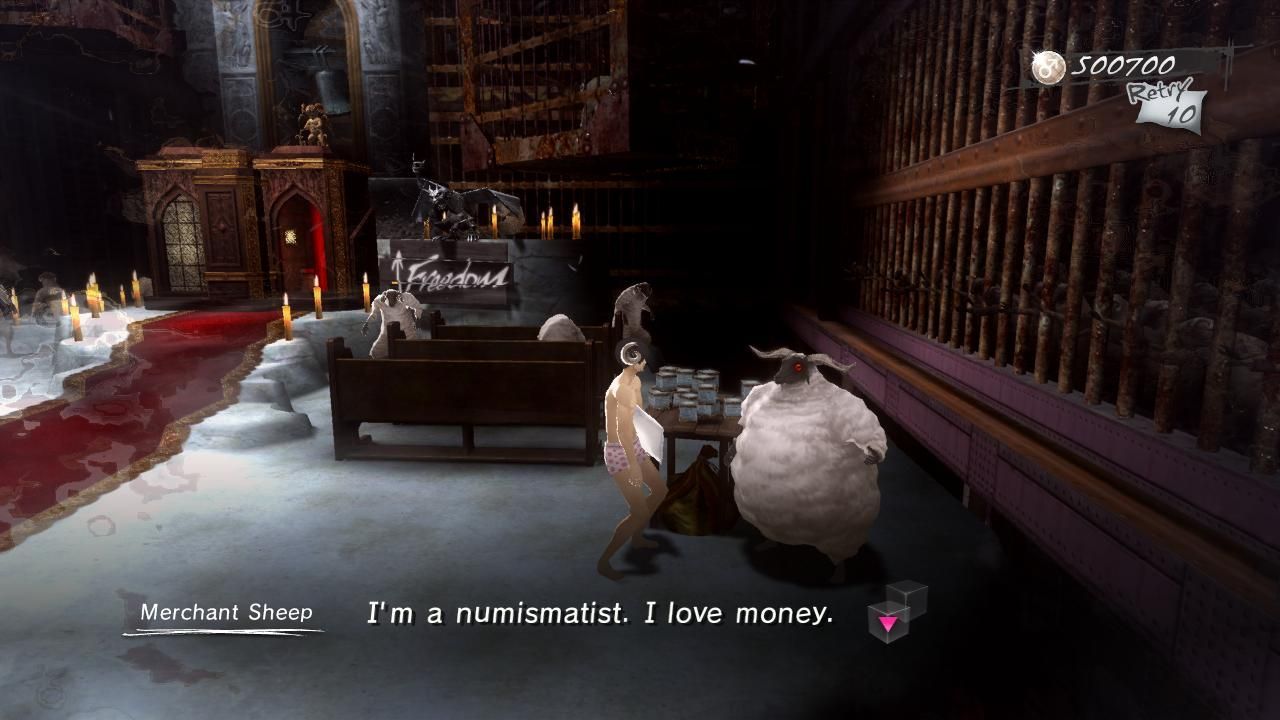Catherine Review
Puzzles and nightmarish supernatural stories are abound in this new release from Atlus
Catherine is the latest release by developer Atlus, in their long lineup of bizarre supernatural tales. Atlus is best known for the Persona and Shin Megami Tensei series and Catherine follows in the footsteps of those previous titles. Unlike those franchises, Catherine strays from the roleplaying game formula and tries to tackle puzzles instead. This creates a very hit or miss experience that will either tantalize your senses to the very end or frustrate you enough to throw the controller against the wall.

Catherine tells the story of Vincent Brooks, whose life is thrown into chaotic disarray. His girlfriend Katherine confesses she is pregnant, while Vincent finds himself being seduced by a luscious young woman named Catherine. On top of all this, Vincent is having a recurring nightmare where he must climb a tower or else be consumed by his inner terrors. Classmates and colleagues are turning up dead via mysterious means day by day. What are these nightmares, and who Vincent will choose: his girlfriend or his new found lover, only you can decide.
The developers are known for their tales of the supernatural and normal everyday life twisted together, and Catherine is no different. The story is engaging from the get go and you truly wish to see the outcome of Vincent’s plight. There is also just enough choice throughout the game so that it feels like you are truly impacting the story. Catherine also boasts eight different endings encouraging multiple playthroughs, even though only three of which are significantly different from the others. Catherine is definitely a trilling yet odd adventure from start to finish no matter what path you take.
Atlus is known for their difficult roleplaying games (Shin Megami Tensei Nocturne - I am looking at you), but they decided to do something a little bit different with Catherine. Catherine is best described as a puzzle game mixed with an interactive anime. The gameplay is split into two distinct phases, awake and asleep. While Vincent is awake you watch cut scenes and send texts that change how the story unfolds. You are also allowed to explore the Stray Sheep bar talking to other occupants. When Vincent falls asleep is when the core of the game begins. You are tasked with creating a path up a tower with random blocks, while the stage falls out from beneath your feet. These blocks can have varying properties from crumbling when you step on them, having spikes jutting up at Vincent, or sliding you across the platform. Occasionally, a boss climbs up after you causing random hazards that can greatly increase the difficulty of the stage. An example of this is a giant chainsaw wielding baby who cuts the stage in half at random intervals. These two different styles of gameplay cycle from one to the other as you progress through the story.

The main puzzle element of Catherine either clicks with you or frustrates you to no end. If you are in the former category, Catherine can be an exhilarating and addicting experience that will have you seeing blocks in your sleep. The controls can be a little maddening at times though. You are tasked with some puzzles that require you to navigate behind the stage. This wouldn’t be a problem, but bad camera angles and finicky controls can make these sections a nightmare. You also have to be careful as you can accidentally push or pull a block in a way that you did not intend, screwing up your whole progress. Other than those issues, Catherine controls well – it could just use a little bit of fine tuning.
Catherine also holds a few diversions outside of the main campaign. There is an engaging mini game during the daytime sequences that is deceptively deep called Rapunzel. Rapunzel is a slow paced version of Catherine that is more focused on the puzzle elements than speed and can be quite challenging. The game could be a standalone DLC release in its own right with 128 levels. Coliseum scenario is a two player mode where you try to race your opponent to the top a randomly generated tower. The last mode is Babel that pits you against increasingly difficult towers that really test your mastery of Catherine’s mechanics. You can also replay old story missions to get a better score and post them on an online leaderboard.
Catherine is the first high definition game developed by Atlus. The visuals are crisp, clean, and look good on an LCD T.V. Catherine is primarily rendered with the in-game engine and it gives off an anime feel that matches the aesthetic the game is trying to convey. There are also brief interludes of anime cut scenes to mix it up. These scenes are pretty jarring as the animation differs and the sound spikes up just like commercial breaks during your favorite television show. This can be pretty distracting, but overall the graphics look good for Atlus’ first outing into high definition.

The game has a catchy soundtrack that fits the atmosphere. The music varies from J-Pop to dark classical movements that helps convey the torment of Vincent. The frame rate is steady and there is no major screen tearings. The voice actors portray their roles well and put the right amount of emotion to breathe life into their characters. Overall Catherine has a strong presentation that is maintained through its strong soundtrack.
Atlus may be new to the HD scene, but Catherine does well for itself combining crisp visuals with an engaging story and addictive gameplay. The supernatural elements common to all of Atlus’ game will intrigue you until the final cut scene, as you follow Vincent’s horrific nightmare riddled-week. Even though Catherine is a single player experience there is enough replay value in the form of multiple endings and challenge modes that this game will give you great mileage. There are a few hiccups in the form of clunky controls and bad camera angles that can aggravate the player so be warned. If you enjoy puzzles and nightmarish supernatural stories, Catherine might be right up your alley.
 Comments
Comments
















